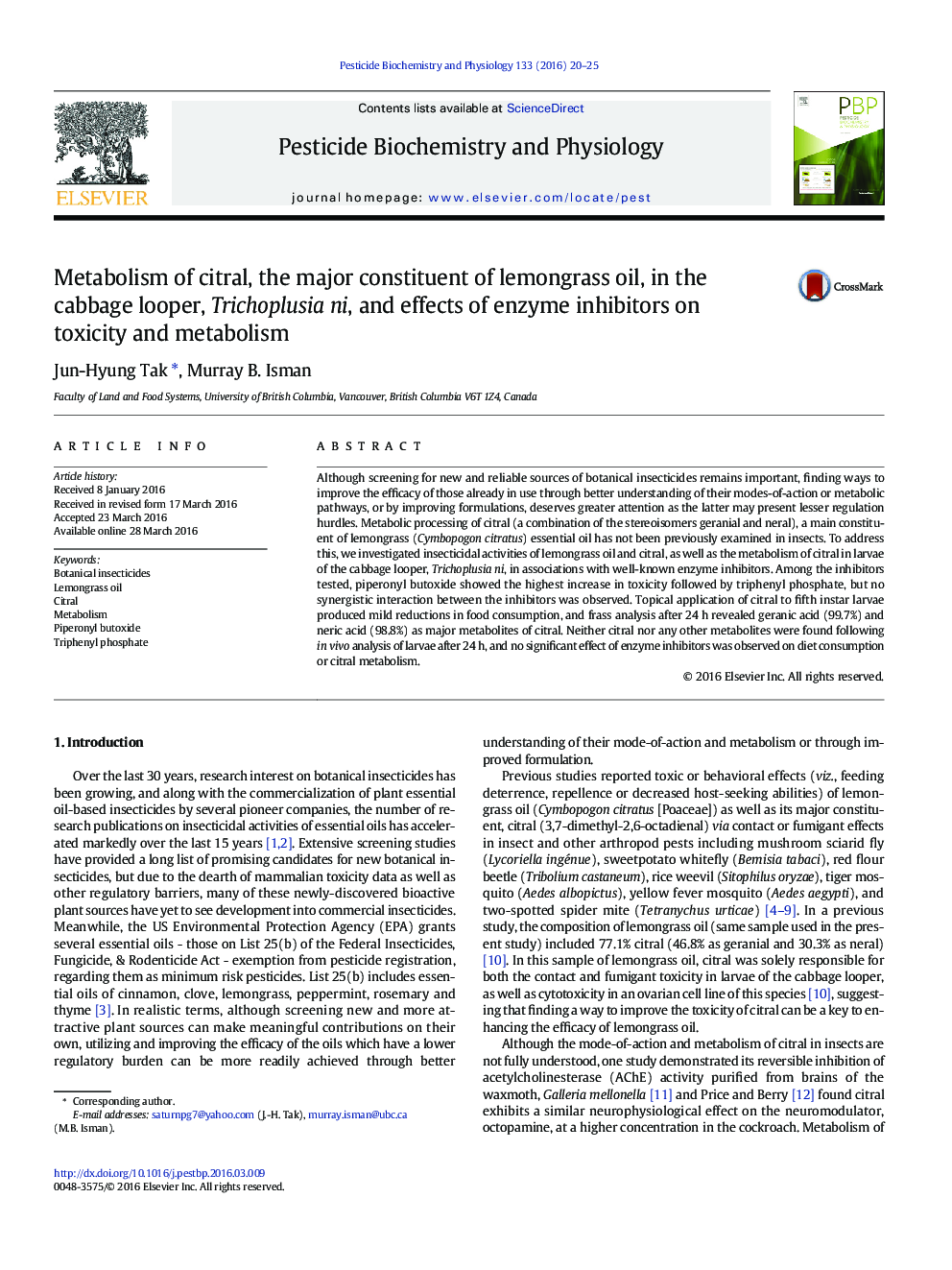| Article ID | Journal | Published Year | Pages | File Type |
|---|---|---|---|---|
| 5514904 | Pesticide Biochemistry and Physiology | 2016 | 6 Pages |
â¢The insecticidal activity of lemongrass oil comes mainly from that of citral.â¢Citral was mostly metabolized and excreted in an acid form within 24 h.â¢Enzyme inhibitors enhanced the toxicity of lemongrass oil and citral.â¢Piperonyl butoxide alone showed toxicity in the cabbage looper.
Although screening for new and reliable sources of botanical insecticides remains important, finding ways to improve the efficacy of those already in use through better understanding of their modes-of-action or metabolic pathways, or by improving formulations, deserves greater attention as the latter may present lesser regulation hurdles. Metabolic processing of citral (a combination of the stereoisomers geranial and neral), a main constituent of lemongrass (Cymbopogon citratus) essential oil has not been previously examined in insects. To address this, we investigated insecticidal activities of lemongrass oil and citral, as well as the metabolism of citral in larvae of the cabbage looper, Trichoplusia ni, in associations with well-known enzyme inhibitors. Among the inhibitors tested, piperonyl butoxide showed the highest increase in toxicity followed by triphenyl phosphate, but no synergistic interaction between the inhibitors was observed. Topical application of citral to fifth instar larvae produced mild reductions in food consumption, and frass analysis after 24Â h revealed geranic acid (99.7%) and neric acid (98.8%) as major metabolites of citral. Neither citral nor any other metabolites were found following in vivo analysis of larvae after 24Â h, and no significant effect of enzyme inhibitors was observed on diet consumption or citral metabolism.
Graphical abstractDownload full-size image
